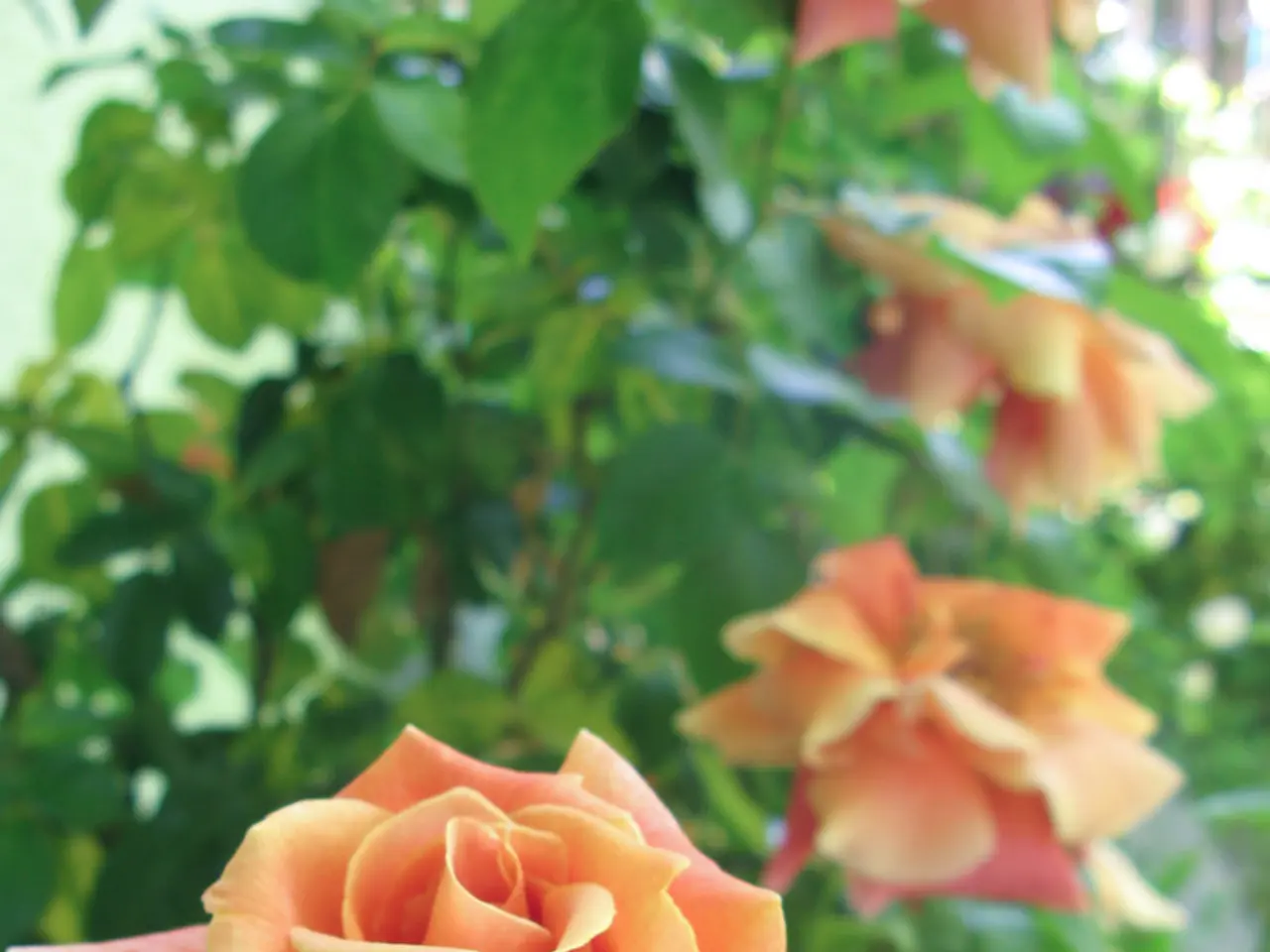UK-Compatible Flora for Clay Soil Gardening: Suitable Plants and Blossoms
In the world of gardening, clay soil can pose a challenge due to its heavy texture and water retention properties. However, with some careful preparation and the right choices, it can become an ideal growing medium for a variety of plants.
For roses, a recommended variety for clay soils is 'Rosa Peace'. To improve the texture of clay soil for roses, it's essential to thoroughly amend the soil with plenty of organic matter such as well-rotted manure, leaf mold, or garden compost. Work this into the top 30 cm (about 12 inches) of soil well before planting. This improves moisture retention, drainage, and nutrient availability while loosening the heavy clay texture for better root penetration. Adding a small handful of bonemeal around the roots can also encourage good root establishment.
Mulching with organic material like compost or bark chips helps insulate the soil, reduce evaporation, and maintain consistent moisture levels. When watering, apply deep and infrequent irrigation to avoid waterlogging, as clay holds moisture for longer periods. To combat waterlogging, addition of mulch is necessary to ease soil compaction and increase drainage.
For container-grown roses, a mixture of John Innes No. 3 and multipurpose compost with some bonemeal is optimal for moisture retention and nutrient supply.
When it comes to hydrangeas, the Hydrangea macrophylla, or mophead/lacecap hydrangea, is the best type to grow in clay soil. However, too much fertiliser can lead to excessive foliage growth at the expense of flowers. To make clay soil more hydrangea-friendly, mix in some well-rotted compost or aged manure to lighten the soil and give it a fluffier texture.
Clay soil is rich in nutrients and very fertile, making it an excellent choice for vegetables. Climbing beans, peas, globe artichokes, potatoes, beetroot, parsnips, swedes, turnips, carrots, onions, cabbage, broccoli, Brussels sprouts, kale, cauliflower, kohlrabi, radishes, swedes, turnips, and geraniums (which prefer moist but well-drained soil in full sun and should be cut back in late summer) are good choices for clay soil.
Lastly, it's important to remember that mulching is beneficial for clay soil, as it helps the soil retain moisture and keep a consistent temperature.
By following these guidelines, you can transform your clay soil into a thriving garden for roses, hydrangeas, and a variety of vegetables. Happy gardening!
[1] Soil Association [2] Royal Horticultural Society [3] Gardeners' World [4] Gardening Know How
For a thriving home-and-garden lifestyle, transform clay soil into an ideal growing medium by thoroughly amending it with organic matter such as well-rotted manure, leaf mold, or garden compost. [1] [2] [3] [4]
Mulching with organic material like compost or bark chips is beneficial for clay soil, as it helps the soil retain moisture and keep a consistent temperature. [1] [3] [4]








